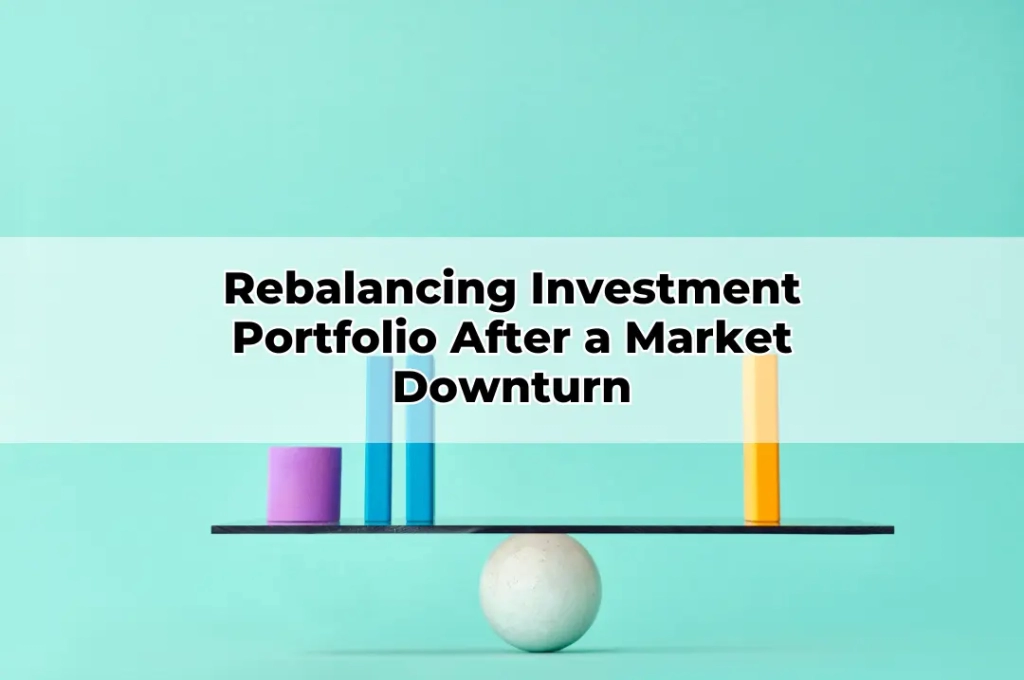Rebalancing Investment Portfolio After a Market Downturn
Table of Contents
ToggleRebalancing an investment portfolio is a critical aspect of maintaining long-term financial stability. After a market downturn, assets may become misaligned with an investor’s original strategy. This process ensures that the portfolio reflects the investor’s risk tolerance and financial goals. Without periodic adjustments, investments can drift too far from their intended allocation, potentially increasing risk exposure.
Assessing the Impact of a Market Downturn on Your Portfolio
Following a downturn, investors must evaluate how their portfolio has been affected. Equities may have lost value, while bonds or defensive assets may have gained in relative proportion. Understanding the extent of this shift is crucial before making any corrective actions. A thorough assessment involves comparing the current asset allocation to the original investment strategy.
Setting Clear Investment Objectives Post-Downturn
Investment goals may need recalibrating after a market decline. If risk tolerance has changed due to financial circumstances or shifts in market sentiment, it is essential to redefine objectives. Investors should assess their investment time horizon, income needs, and growth expectations to realign their strategy accordingly.
Evaluating Asset Allocation and Diversification
A well-diversified portfolio should include a mix of asset classes to spread risk effectively. During a downturn, imbalances may emerge where some asset classes become overrepresented while others shrink. Rebalancing ensures that assets are distributed optimally, preventing overexposure to a single sector or investment category.
Determining the Optimal Rebalancing Strategy
Investors have various approaches to rebalancing, including periodic, threshold-based, or tactical adjustments. A periodic strategy involves reviewing allocations at set intervals, while threshold-based rebalancing triggers adjustments when asset classes deviate beyond predefined percentages. Tactical rebalancing, on the other hand, allows investors to make strategic shifts based on market conditions.
Selling Overweight Assets and Buying Underweight Assets
Rebalancing typically involves selling portions of overperforming assets and purchasing underperforming ones to restore balance. This contrarian approach ensures that investors buy low and sell high, capitalising on market inefficiencies. However, transaction costs and tax implications should be considered before executing trades.
The Role of Tax Considerations in Rebalancing
Capital gains tax can erode investment returns if not managed carefully. Investors should strategically sell assets in tax-advantaged accounts where possible or utilise tax-loss harvesting to offset gains. Understanding the tax consequences of rebalancing decisions is crucial to maintaining portfolio efficiency.
Utilising Dollar-Cost Averaging in Rebalancing
Dollar-cost averaging can be an effective way to rebalance a portfolio gradually. Instead of making large lump-sum adjustments, investors can systematically reinvest funds over time, reducing the risk of mistiming the market. This approach also allows for continued capital deployment into undervalued assets.
Considering Alternative Investment Opportunities
A market downturn often reveals new investment opportunities. Investors may consider diversifying into alternative assets such as infrastructure, commodities, or international markets to hedge against future volatility. These asset classes can provide additional resilience to a portfolio’s structure.
The Role of an Online Financial Adviser in Portfolio Rebalancing
Engaging an online financial adviser can streamline the rebalancing process. Professional guidance ensures that investment strategies remain aligned with personal financial goals. By leveraging digital advisory services, investors can access tailored recommendations while maintaining cost efficiency.
Monitoring Market Trends and Adjusting Accordingly
Rebalancing is not a one-time event but an ongoing process. Investors must stay informed about macroeconomic trends, interest rate movements, and sectoral shifts. Periodic reviews and adjustments ensure that portfolios remain well-positioned for changing market conditions.
Seeking Retirement Financial Advice for Long-Term Stability
For those nearing retirement, financial planning takes on additional complexity. Rebalancing strategies should prioritise capital preservation while maintaining sufficient growth potential. Consulting a Toowoomba Financial Adviser can help retirees optimise their portfolios to support a stable income throughout retirement.
By implementing a structured approach to portfolio rebalancing, investors can mitigate risks, enhance returns, and maintain a resilient financial position in the face of market downturns. Engaging with professional financial planning services in Toowoomba ensures that investment strategies remain robust and adaptable to evolving economic landscapes.









